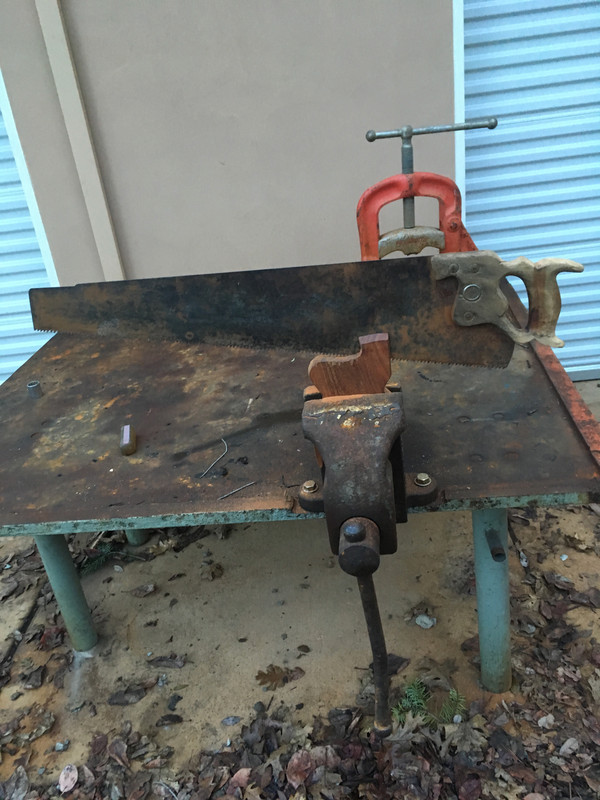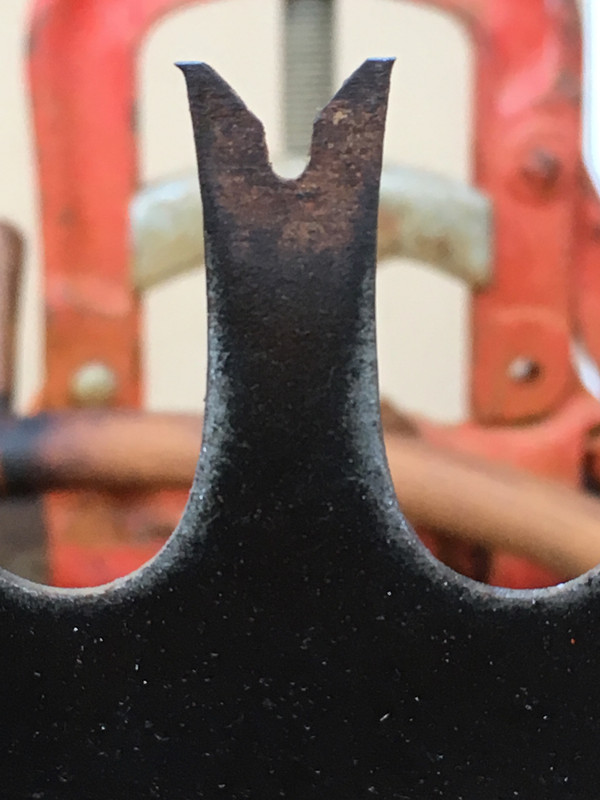After a mere 4 months I finally got around to cleaning the rust off the entire blade of my disston and making a new handle for it. The handle material is a ipe decking cutoff. Surprisingly, it only took 2-3 hours of working on it to get it from board to saw. It still needs the depression for the nut heads to go into drilled out, however. Half an hour at the most I'm sure. The tools I used are two rasps, a drill, a few bits for the screws and drilling out the grip, a coping saw to cut the wood between holes for the grip, a backsaw for getting it to rough shape, my Stiletto rip saw for the blade slot, a hatchet for roughing part of it, and a random orbit sander for finishing it. Now I just need to make a helper handle. Maybe in May....
I finally got around to cleaning the rust off the entire blade of my disston and making a new handle for it. The handle material is a ipe decking cutoff. Surprisingly, it only took 2-3 hours of working on it to get it from board to saw. It still needs the depression for the nut heads to go into drilled out, however. Half an hour at the most I'm sure. The tools I used are two rasps, a drill, a few bits for the screws and drilling out the grip, a coping saw to cut the wood between holes for the grip, a backsaw for getting it to rough shape, my Stiletto rip saw for the blade slot, a hatchet for roughing part of it, and a random orbit sander for finishing it. Now I just need to make a helper handle. Maybe in May....



















